All About Vitrified Tiles | What Are Vitrified Tiles | Advantages of Vitrified Tiles
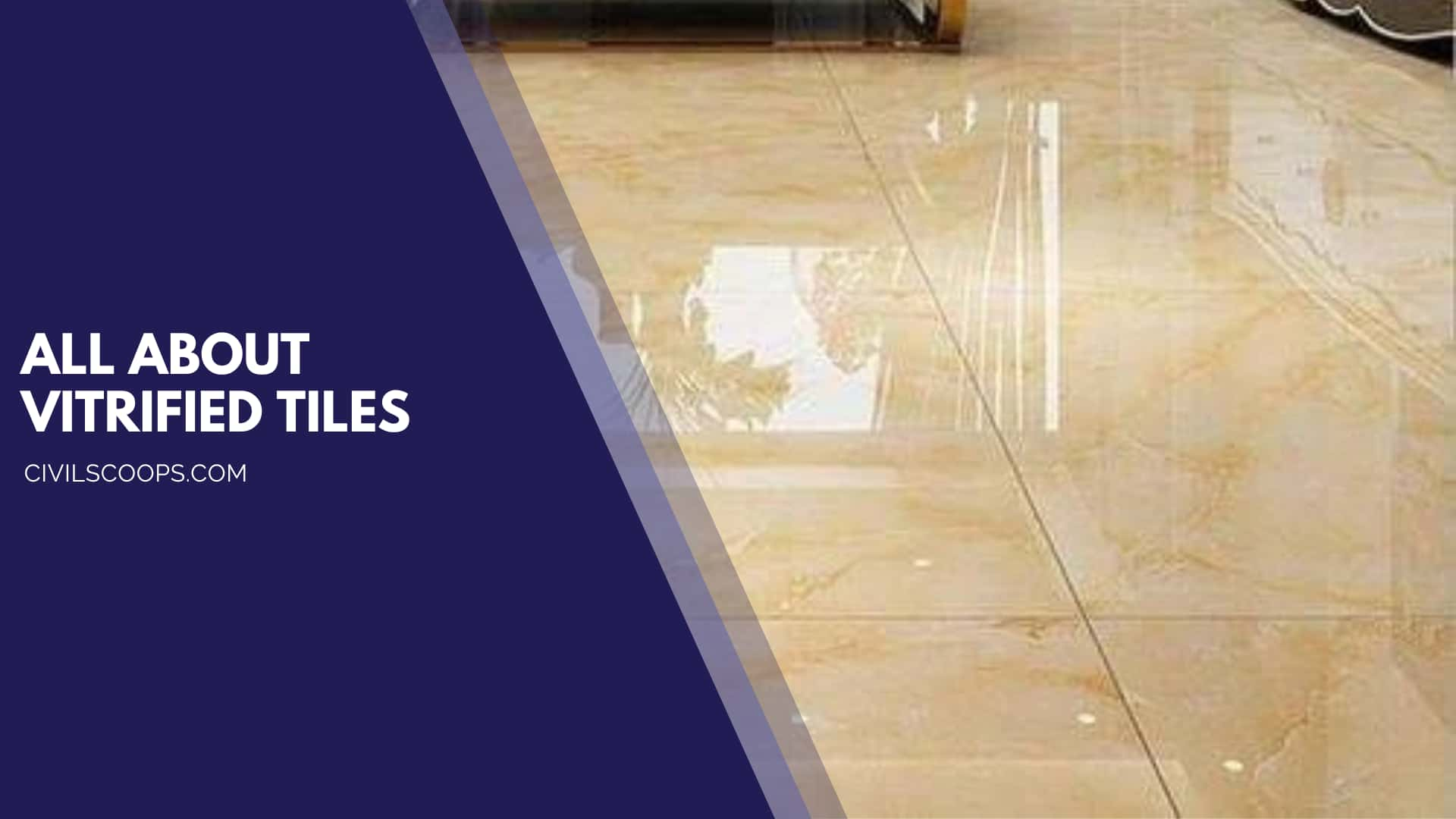
Table of Contents
Introduction of Vitrified Tiles
Tiles are one of the most important parts of the interior of the building. Tiles give a smooth and plane surface to the interior of the buildings.
Tiles enhance the beauty of the floors in the interior of the structure. There are different types of tiles for the house available in the market as per the requirement.
Vitrified tiles are one of the most common and popular tiling options widely used in India. Vitrified tiles are available with enhanced qualities.
Vitrified tile is a non-porous style that is widely used for vitrified flooring for the replacement of marble and Granite flooring.
In this article, you will get to know all about Vitrified tiles and Types of vitrified tiles, the Advantages of vitrified tiles, and the disadvantages of vitrified tiles.
What Are Vitrified Tiles?
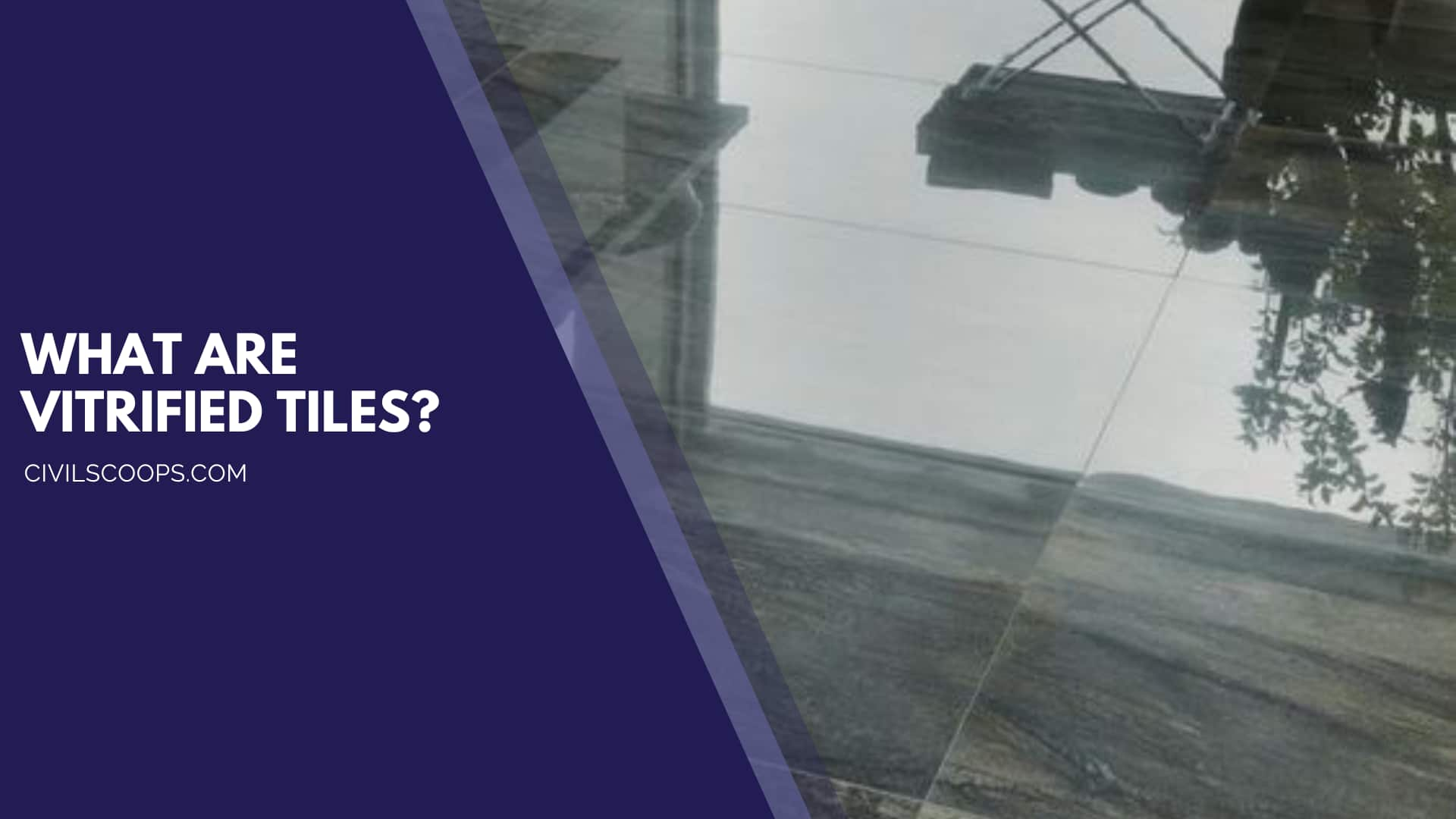
Vitrified tiles are ceramic tiles that have very low porosity and widely used outdoors was due to their water and frost resistance properties. Vitrified tiles are made from a mixture of silica, clay, quartz, and feldspar.
Vitrified tiles are a mix of silica and clay in the appropriate proportion. The fused material is heated at a high temperature which leads to the unique texture of the vitrified tiles. Vitrified tiles appear with Shiny and glass-like surfaces.
Vitrified tiles have greater mechanical strength as well as scratch resistance as compared to granite or marble.
The vitrified tile thickness ranges from 10 mm to 12mm. The vitrified tiles have an absorption rate of 50 %. The installation of vitrified tiles is easy as compared to other types of tiles and it does not require skilled labor for its installation.
The maintenance of the Vitrified Tiles is easy because of their shining surface. Vitrified tiles are smooth in surface and give you an aesthetic look in the interior of the buildings.
Vitrified tiles are more durable as compared to other types of tiles and have more flexural strength.
The Vitrified Tiles are available in different sizes but the common size which is mostly used is 2 feet x 2 feet. Vitrified tile thickness ranges from 8 mm to 12 mm.
The water absorption of vitrified tiles is negligible, that’s why it is suitable for wet areas. Vitrified tiles also have high frost resistance because of their low water absorption.
Advantages of Vitrified Tiles
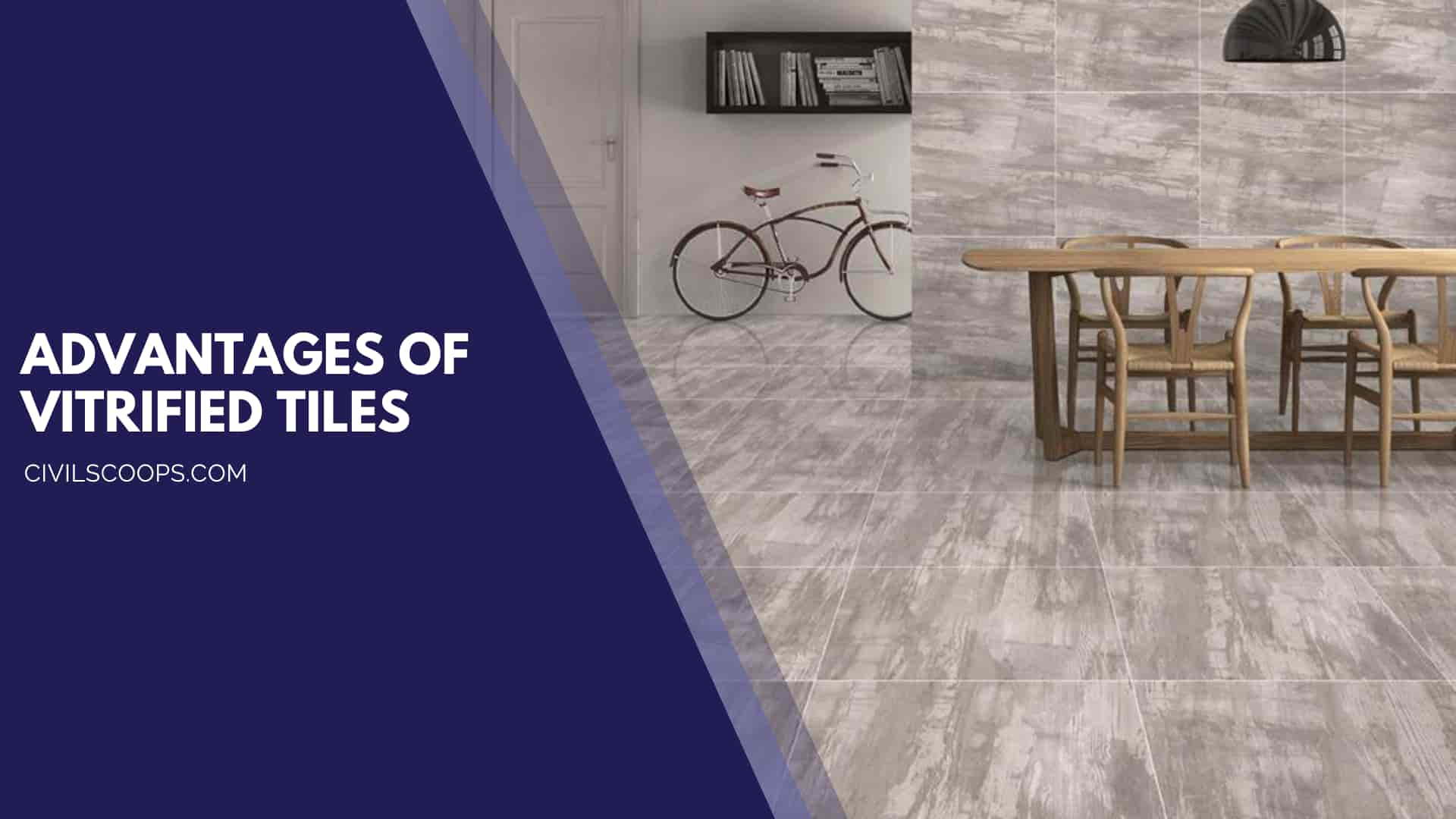
There are various advantages of vitrified tiles which are as follows
- Vitrified tiles have a consistent design, pattern, and texture.
- The installation process of vitrified tile is very easy and simple.
- Vitrified tiles are scratch and stain-resistant.
- Vitrified tiles are manufactured by the process of vitrification which has high strength.
Disadvantages of Vitrified Tiles
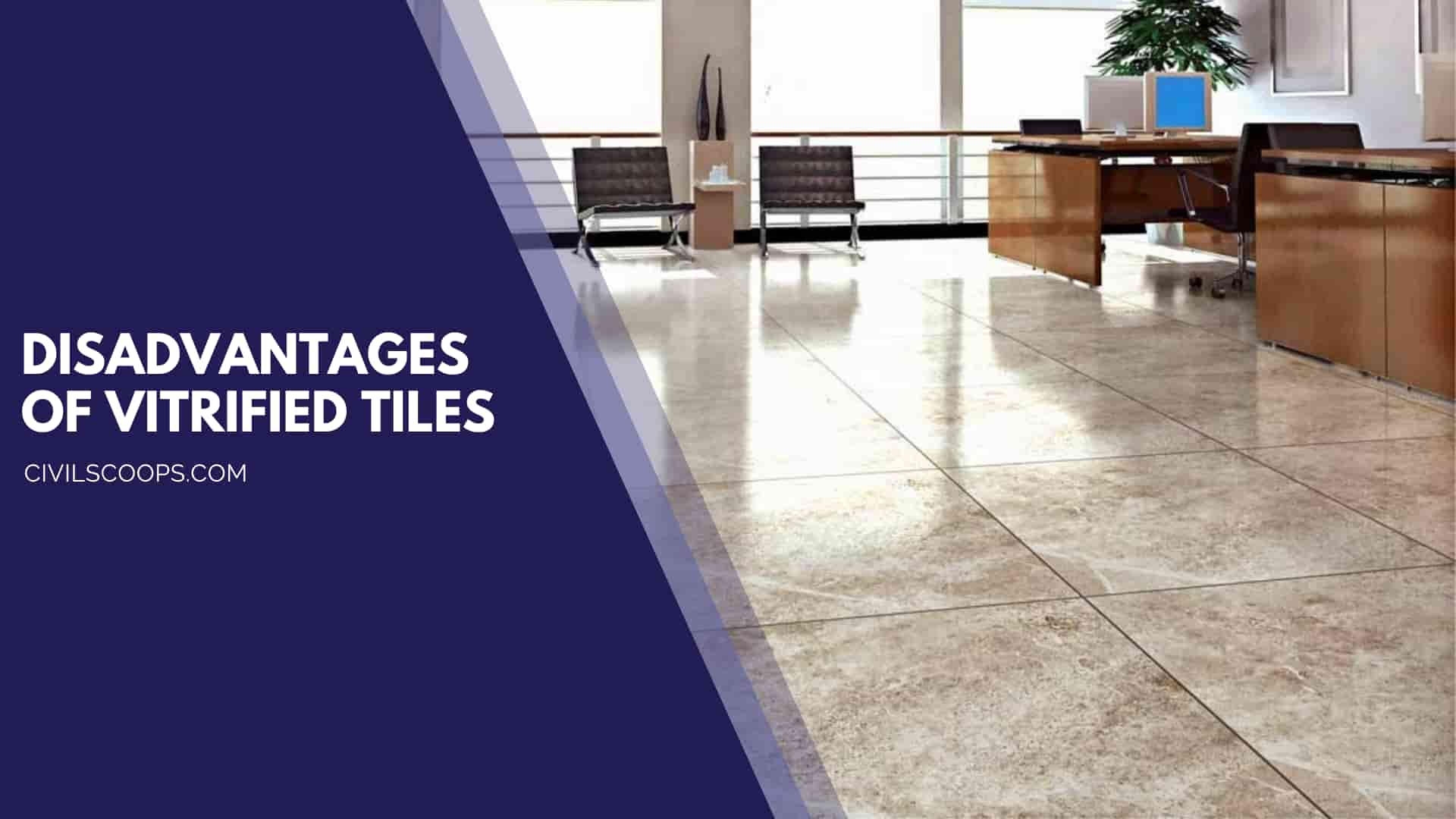
- Vitrified tiles are more expensive as compared to ceramic and porcelain tiles.
- The ages of vitrified tiles may crack if it is not treated properly.
Also Read: Difference Between Flyover and Bridge | What Is Flyover | What Is Bridge
Different Types of Vitrified Tiles

There are different types of vitrified tiles which are as follows
- Double Charged Vitrified Tiles
- Full Body Vitrified Tiles
- Glazed Vitrified Tiles
Double Charged Vitrified Tiles
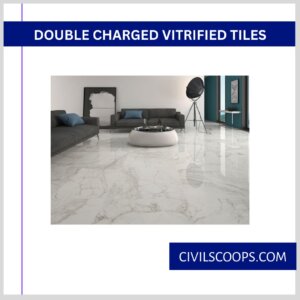
Double-charge vitrified tiles are one of the best choices which are widely used for residential as well as commercial projects.
Double-charged vitrified tiles are manufactured by infusing the two layers of tiles together which makes them thicker than conventional tiles.
The process of vitrification makes the tile surface stronger and shinier which gives an aesthetic look. Double-charge vitrified tiles are durable and scratch-resistant. Double-charge vitrified tiles are used in homes corporate places hospitals banks and other associations etc.
Vitrified tiles are budget-friendly and widely used in the interior of homes and offices. Double-charged vitrified tiles are usually 3 to 4 mm thick in size and are made by merging two layers of tiles.
The double-charged vitrified tiles required less maintenance and it prevents the accumulation of dirt and dust on the surface of this style which is very easy to clean. Double-charge vitrified tiles are suitable for heavy-traffic commercial projects.
The price of double-charged vitrified tiles is a little bit more as compared to polish-glazed vitrified tiles. The price range of double-charged vitrified tiles starts from Rs 50 per square meter.
Advantages of Double Charged Vitrified Tiles
The double-charged vitrified tiles advantages are as follows.
- The double-charge vitrified tiles are scratch and stain resistance.
- Double-charge vitrified tiles are very easy to clean and maintain.
- Double charge vitrified tiles are manufactured with the vitrification process due to which it has very high strength.
- It is an extremely durable tile compared to other types of tiles
- Double-charge vitrified tiles can withstand heavy foot traffic without any wear and tear.
- The installation process of double-charge vitrified floor tiles is very easy.
Disadvantages of Double Charge Vitrified Tiles
- One of the disadvantages of double-charge vitrified tiles is that it is not available in a variety of complex design patterns.
Full Body Vitrified Tiles

Full-body vitrified tiles have a uniform color that runs throughout the thickness of the vitrified tile. The full-body vitrified tile is used for high-traffic areas because it has scratch-resistant.
Glazed Vitrified Tiles
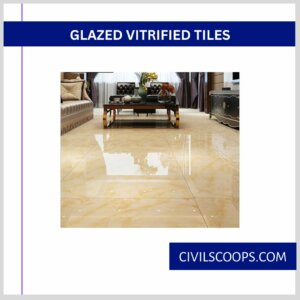
Please vitrified tiles are manufactured on a glass surface which is printed with digital technology.
Glazed vitrified tiles are mainly classified into two types
Soluble Salt Vitrified Tiles
- Soluble salt-vitrified tiles are available in the market at a cheap price.
- These types of tiles are used to penetrate the surface of the time and give it color design and pattern.
Nano Polished Soluble Salt Tiles
- These types of tiles are made by adding a layer of liquid silica to the soluble salt-vitrified tiles.
- In this process, the micropores are filled in the tile to make the tile look shinier and feel smoother on the surface.
Glazed Vitrified Tiles Price
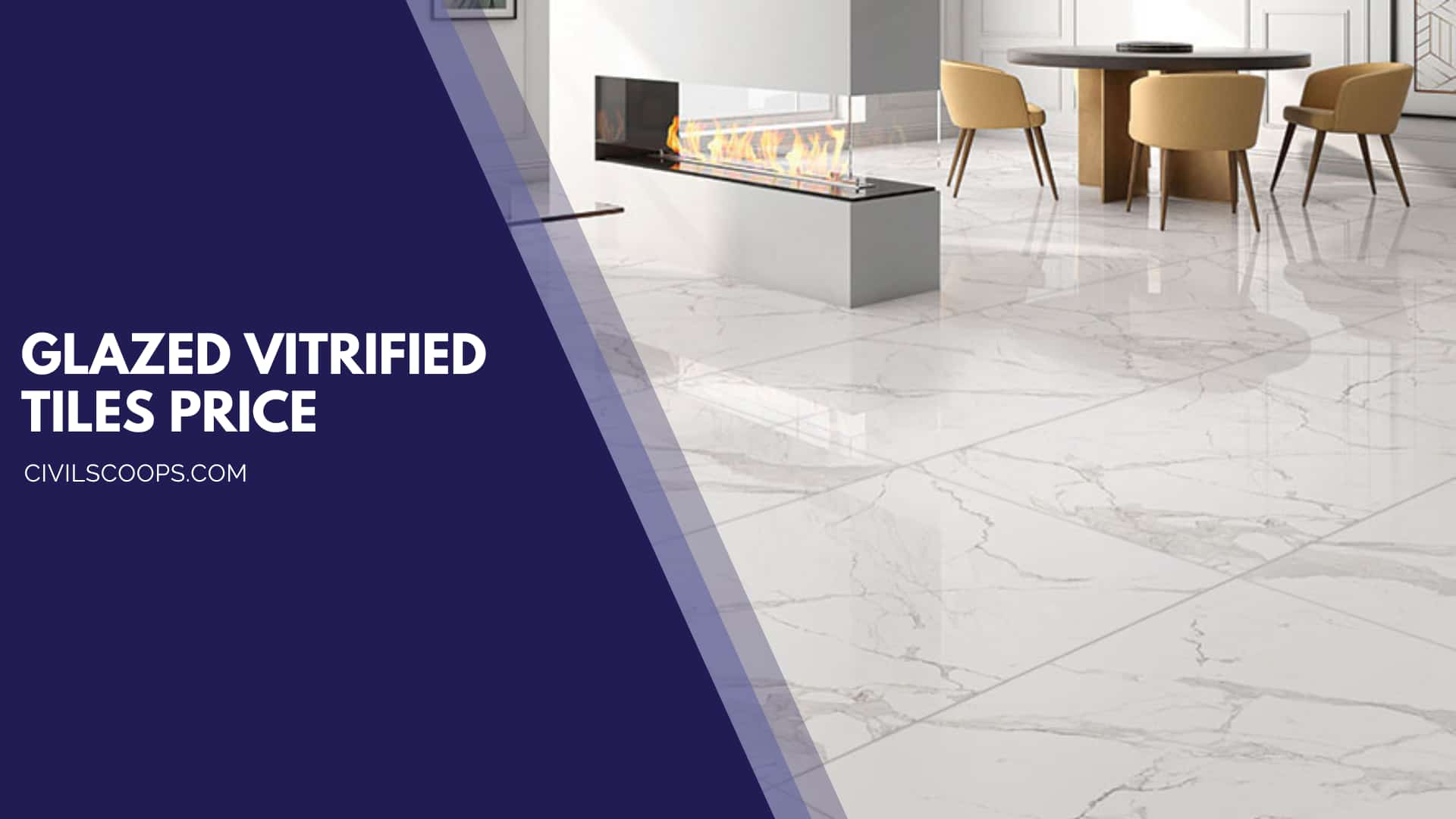
- The glazed vitrified tile of 6 to 8 mm thickness is Rs 30 per square feet.
- The place vitrified tile price of 8 to 10 mm thickness is Rs 24 per square feet.
Also Read: Stone Masonry vs Brick Masonry | What Is Brick Masonry | What Is Stone Masonry
[su_box title=”FAQ” style=”default” box_color=”#333333″ title_color=”#FFFFFF” radius=”3″ class=”” id=””]
Types of Vitrified Tiles
Vitrified tile is a ceramic tile with very low porosity. It is an alternative to marble and granite flooring. Vitrified tiles are often used outdoors due to their water and frost resistance. There are four types of Vitrified tiles – Soluble Salt, Double charge, Full Body, and Glazed.
Glazed Vitrified Tiles Price
[su_table responsive=”yes” alternate=”no”]
| Thickness | Min Price | Max Price |
| 6 – 8 mm | Rs 30/Square Feet | Rs 32/Square Feet |
| 8 – 10 mm | Rs 24/Square Feet | Rs 200/Square Feet |
[/su_table]
Vitrified Tile Thickness
These tiles are 10-12 mm thick which is just close to natural granite and marble stone thickness. When compared with many other tile options available in the market, vitrified tiles prove to be a durable choice.
Double Charged Vitrified Tiles Advantages
Easy maintenance. Prevents accumulation of dirt and dust on the surface. Extremely durable. Their surface is resistant to scratches and stains.
Different Types of Tiles for House
- Ceramic Tile.
- Porcelain Tile.
- Glass Tile.
- Cement Tile.
- Marble Tile.
- Mosaic Tile.
- Granite Tile.
- Limestone Tile.
Vitrified Tiles Price
[su_table responsive=”yes” alternate=”no”]
| Description | 1000 sq.ft |
| Vitrified Tiles Rs. 60/- per sq.ft | Rs. 60,000 |
| Laying Cost (River sand, Cement & Labour) – Rs. 90/- per sq.ft | Rs. 90,000 |
| Wall Skirting – 25% of flooring (Tile Cost + Laying Cost) | Rs. 37,500 |
| Total Cost of Flooring | Rs. 1,87,500/-* |
[/su_table]
Vitrified Tiles Vs Ceramic Tiles
Ceramic tiles have a coarser texture than vitrified tiles, which are known for their glossy look. However, ceramic tiles have a more natural and earthy look than vitrified tiles, whose glassy appearance gives an artificial touch. The process of vitrification makes vitrified tiles stronger than ceramic tiles.
Difference Between Porcelain and Vitrified Tiles
Porcelain tiles are ceramic tiles that have been baked beyond to improve thickness, and durability, and to render the tiles impermeable properties. Vitrified tiles are made by vitrifying the tiles, this gives them a glass appearance and creates an extremely uniform and sturdy substance.
Vitrified Tiles Disadvantages
Cons of Vitrified Floor Tiles Design
- Slippery floor. These floor tile designs are extremely slippery especially when it comes to being the floor wet.
- Not an environment friendly option.
- Expensive installation.
- Repair.
Vitrified Tiles Advantages and Disadvantages
Pros of Vitrified Floor Tiles Design
- Durable. When made a comparative study with marble, granite and ceramic, these tiles flooring is comparatively a durable option.
- Bright.
- Thick.
- Non-porous.
- Cost-effective.
- Slippery floor.
- Not an environment friendly option.
- Expensive installation.
Types of Vitrified Floor Tiles
There are four types of Vitrified tiles – Soluble salt, Double charge, Full Body, and Glazed.
Which Tile Is Best for Floor?
Affordability and durability make ceramic the ideal choice for any room in your home, including the bathroom, kitchen, and front entrance. Glazed ceramic tile offers more protection against stains or damage compared to wood, carpet, or even vinyl plank flooring.
Which Is the Best Quality Vitrified Tiles?
Here are the list of Top 5,
- Kajaria.
- Somany.
- Nitco.
- Simpolo.
- Varmora.
What Is the Strongest Tile?
The three toughest tiles are granite, ceramic, and porcelain with porcelain winning hands down as the toughest. However, porcelain can be hard to work with when installing, so it’s possible you’ll have uneven cuts in some sections.
What Is the Strongest Tile for Floors?
Known as the most durable type of tile on the market, porcelain is harder, denser, tougher, and less porous than ceramic tile. It also has a very low absorption rate, meaning it’s virtually impervious to water damage, even after prolonged exposure.
Are Vitrified Tiles Scratch Proof?
Vitrified tile flooring brings class and style in your life and makes your room decor eye-catching. These tiles have many qualities. For example, they don’t absorb moisture, they are stain-resistant and scratch-resistant, they can be cleaned very easily and are very durable and strong.
Which Is More Durable Ceramic or Porcelain Tile?
Both tiles are made from a clay mixture that’s fired in a kiln, but porcelain tile is made from more refined clay and it’s fired at higher temperatures. This makes it denser and more durable than ceramic tile.
What Is the Best Tile for Living Room?
To ensure durability and longevity, you’ll want to choose floor tiles that are sturdy and strong. For this reason, porcelain tiles are often considered the best tiles for the living room floor. Porcelain tiles are hardwearing, largely slip-resistant and extremely strong.
Which Brand Tiles Are Best for Floor?
The Lifestory Research 2021 America’s Most Trusted® Ceramic Tile Flooring Brand Study identified American Olean as the most trusted brand among people considering purchasing ceramic tile flooring.
Which Tiles Are Best for Bathroom Walls?
While ceramic and porcelain tiles work best for shower floors, they are also a good fit for shower walls thanks to their waterproof and non-slip qualities when glazed. In fact, ceramic and porcelain tiles are found on tons of shower walls in U.S. homes.
Which Type of Tiles Is Best for Bathroom?
These are the most popular tiling materials that can be used for bathroom flooring as they are affordable, long lasting, scratch resistant, maintenance free and non-porous in nature.
Which Tile Is Best for Bathroom Floor?
The most popular choice for bathrooms is tile. Specifically, ceramic and porcelain tiles are great options for bathrooms. Tile flooring is resilient, waterproof, available in a variety of colors and designs, and generally less expensive than other hard surface options.
Which Tile Is Best for Bathroom Walls?
To make your life easier, choosing gloss tiles are your best option for a wet room, this is because they are easier to wipe clean and remove any dirt. Whereas textured wall and floor tiles will show marks more and make it harder to remove any dirt. We also suggest using a slightly larger tile to minimise grout lines.
Which Floor Tile Is Most Durable?
What is the most durable floor tile? The most durable flooring is granite, a natural stone. However, glazed porcelain flooring tiles are a great, low maintenance option too as they don’t require annual sealing to upkeep their finish, this often means they are more budget friendly too.
Advantages of Vitrified Tiles
- Vitrified tiles hold a smooth finishing, are fade and scrape resistant.
- Highly resistant to water, dirt and stain, vitrified tiles are super easy to maintain.
- A brilliant alternative to natural stone floorings such as marble and granite, vitrified tiles are low on absorptivity.
Which Tile Is More Durable Ceramic or Porcelain?
Both tiles are made from a clay mixture that’s fired in a kiln, but porcelain tile is made from more refined clay and it’s fired at higher temperatures. This makes it denser and more durable than ceramic tile.
Disadvantages of Vitrified Tiles
- Slippery floor. These floor tile designs are extremely slippery especially when it comes to being the floor wet.
- Not an environment friendly option.
- Expensive installation.
- Repair.
Non Vitrified Tiles Meaning
Non-Vitreous Tiles are tiles that absorb 7% or more moisture. They are suited for indoor use only. Semi-Vitreous Tiles are tiles that absorb from 3% to 7% moisture. They are applicable for indoor use only. Vitreous Tiles are tiles that absorb less that 3% moisture.
Vitrified Tiles Health Issues
Vitrified tiles are extremely hard, cold, and unyielding. They have been known to cause unnecessary stress on joints and subsequently joint pains. This is true for not only humans but also pets. Furthermore, marble, being a natural stone, is a softer material.
[/su_box]
[su_note note_color=”#F2F2F2 ” text_color=”#333333″ radius=”3″ class=”” id=””]
Like this post? Share it with your friends!
Suggested Read –
- BOD Vs COD | What Is BOD | What Is COD
- What Is Dry Pack Mortar | Advantages of Dry Pack Mortar | Disadvantages of Dry Pack Mortar
- WPC Board Vs Plywood | Which Should Be a Better Choice | What Is WPC Board | What Is Plywood
- What Is Shell Structure | 11 Types of Shell Structure | Applications, Advantages & Disadvantages of Shell Structure
[/su_note]
Originally posted 2022-11-03 07:18:57.
